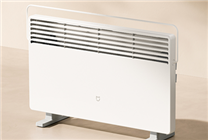Intel’s Next-Gen Nova Lake CPUs: A Leap Forward with AVX10.2 and APX Support
Summary
- Intel’s upcoming Nova Lake architecture will feature support for AVX10.2 and APX instruction sets.
- The integration of AVX10.2 promises enhanced performance for applications involving AI, media processing, and scientific computing.
- Intel’s reintroduction of wide-vector support comes in response to competitive pressure from AMD.
In an important development for the computing industry, Intel has officially confirmed the capabilities of its upcoming Nova Lake architecture. The latest release of the "Architecture Extension Instruction Programming Reference" guide has revealed that Nova Lake CPUs will support both AVX10.2 and APX instruction sets. This is a significant milestone as it marks the return of wide-vector support to consumer-grade processors, a feature that was removed starting with the Alder Lake series.
Breakthrough in Performance with AVX10.2
The inclusion of AVX10.2 is set to transform the performance landscape for a variety of applications. Designed to unify execution across different instruction widths—including 128-bit, 256-bit, and full 512-bit—AVX10.2 addresses previous inconsistencies present in hybrid processor designs utilizing both performance cores (P cores) and energy-efficient cores (E cores). In past iterations, such inconsistencies hindered broader AVX-512 support in mainstream CPUs, but this new architecture heralds a change.
For everyday users, this development means a notable enhancement in performance for tasks requiring intensive vector processing, such as:
- Artificial Intelligence (AI) Reasoning: Improved computational speed can lead to faster, more accurate AI applications.
- Media Processing: Tasks like video rendering and image processing will benefit from increased efficiency and speed.
- Scientific Computing: Researchers will find that heavy calculations can now be executed with greater agility.
APX Instruction Set: Extending Capabilities
In addition to AVX10.2, Nova Lake CPUs will also support the APX instruction set, further broadening the range of processing capabilities available to users. Reports indicate that both desktop and mobile versions of Nova Lake will incorporate these advanced instruction sets, ensuring high-performance computing across devices. This dual support will facilitate improved performance in mobile applications, enhancing the user experience across the board.
Competitive Landscape: Intel vs. AMD
Intel’s announcement comes at a time when its competitor, AMD, is making significant strides with its Zen 5 architecture, which has fully embraced the AVX-512 instruction set on desktop CPUs. The competitive pressure from AMD likely played a crucial role in Intel’s decision to reintroduce such capabilities in the upcoming Nova Lake architecture. This move not only demonstrates Intel’s commitment to innovation but also reflects a strategic response to maintain its position in an increasingly competitive market.
Implications for Future Technologies
The reintroduction of wide-vector support is poised to influence various sectors, notably those involving machine learning, graphically intensive computing, and data-heavy scientific research. The advancements in Nova Lake are expected to fuel a new wave of technological innovations, enabling software developers to create more efficient and powerful applications that capitalize on these updated capabilities.
Conclusion
Intel’s upcoming Nova Lake CPUs are set to redefine performance benchmarks in the CPU market through the inclusion of AVX10.2 and APX instruction sets. This strategic move not only improves performance for key applications but also indicates a renewed competitive spirit within the industry. As consumers and businesses alike stand to benefit from these advancements, the next generation of Intel processors promises to be a game-changer.
With this robust enhancement in functionality and response to market dynamics, Intel is not merely keeping pace with its competitor but is potentially positioning itself for future growth and innovation. The upcoming release of Nova Lake will be watched closely by tech enthusiasts, consumers, and industry experts alike.







